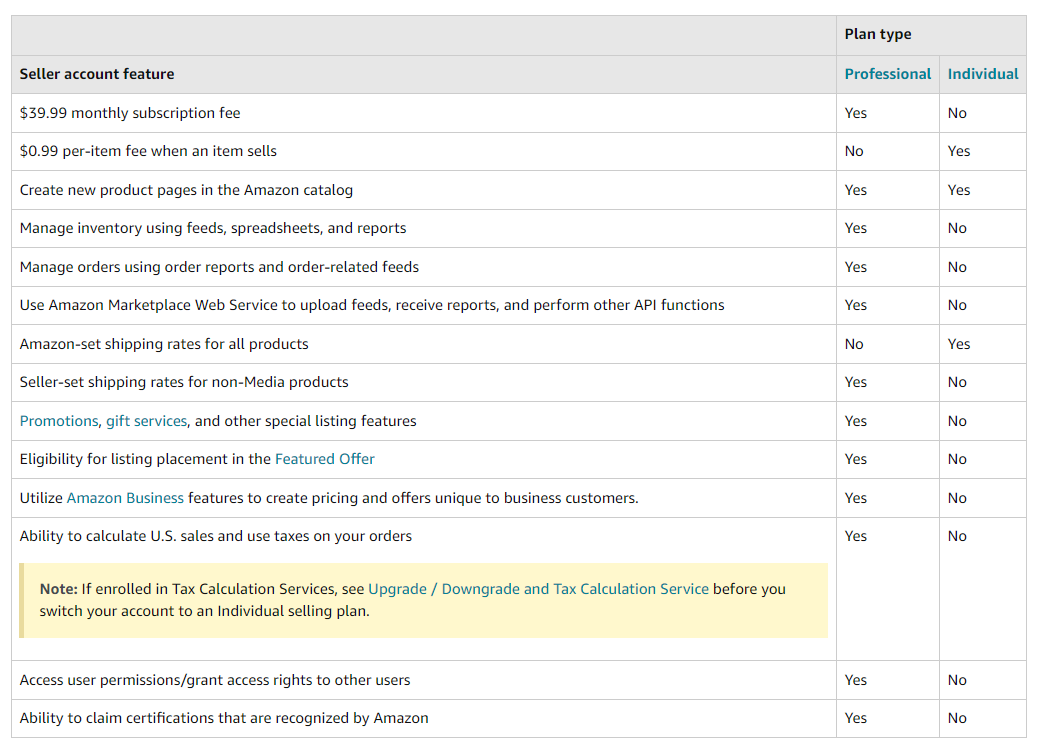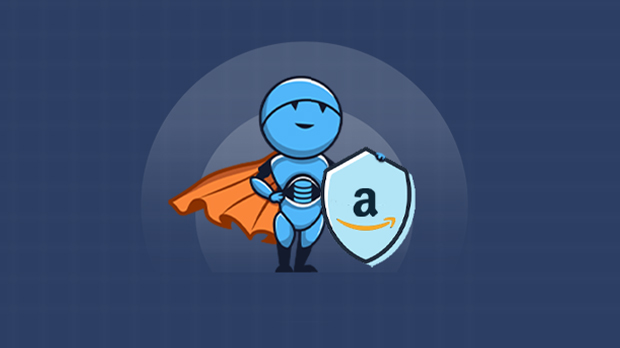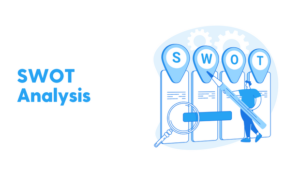Amazon Seller Central offers vast business potential for online sellers. It gives you access to millions of customers shopping on the Amazon marketplace. However, Amazon Seller Central can be complicated to navigate, especially if you are a new seller.
We have devised a comprehensive guide that helps you make the most of Amazon Seller Central for your eCommerce business. This guide includes how to register, dashboards, reports, and also several other incentives and benefits available for new sellers and other merchants.
*Updated Jan 2023 – List of recent updates and upcoming updates in 2023 on Amazon Seller Central
1. Introduction of the Amazon Brand Registry (December 2022)
2. Increase in FBA storage fees for peak season months (October 1, 2022)
3. Update of inventory restrictions (allowing sellers to store at least four months of inventory in FBA)
4. Introduction of new features to help sellers monitor their account health (Account Health Dashboard and Account Health Assurance (AHA))
5. Introduction of Multi-Channel Fulfillment (MCF) fees
6. Faster shipping, free integrator apps, and enhanced features
7. Expansion of the Small and Light Program
8. Increase of the item price for eligible products from $10-or-less to $12-or-less
9. Reduction of the returns processing fee rates for customer-returned products in the Apparel and Shoes categories
10. Increase in monthly off-peak storage fees for standard-size products
11. Introduction of a storage utilization surcharge for sellers who have a high cube of inventory stored in fulfillment centers
12. Increase in removal and disposal fees
13. Increase in the surcharges applied to inventory stored between 271-365 days
14. Introduction of aged inventory surcharges on inventory stored between 180-270 days.
What is Amazon Seller Central
Amazon Seller Central is the dashboard you use to run your Amazon business. You will manage your inventory, advertising, orders, reports, performance, and more. It is the core of your Amazon business and helps you connect your brand to the buyer.
Sellers may add items, manage inventory, market their products, track their success, and do much more using the Seller Central interface. Amazon Seller Central enables merchants to operate an online store successfully without creating, managing, or handling payments and returns.
What are Amazon Seller Central’s “New Seller incentives”
In March 2022, Amazon launched “New Sellers Incentives” that were designed to help new sellers with the professional selling plan to launch and grow their Amazon business.
Amazon New Seller Incentives Eligibility
While the new sellers on Amazon can use New Seller incentives, existing merchants who launch their products in a new geographic region can also avail of them. Here are the benefits sellers who registered on or before January 1, 2022, can benefit from:
Amazon Brand Registry Incentives
New merchants can register on the Amazon Brand Registry and become eligible for the following benefits:
- 5% bonus or up to $50000 bonus in up to $1 million in qualified branded sales.
- Up to $100 worth of Transparency codes. Transparency helps sellers prevent counterfeit product issues, identify supply chain issues, and improve the overall customer experience on Amazon.
- Sellers can enroll one product on Vine to get up to 30 trusted reviews, equivalent to $200. Vine invites trusted Amazon reviewers to provide their reviews about new products on Amazon and guide customers’ purchase decisions.
Fulfillment by Amazon (FBA) Incentives
- Up to 90 days of free storage on 50 regular units or 30 oversized units. Get 120 days of free storage on 100 units of apparel and shoes.
- 180 days of free liquidation on 50 regular or 30 oversized units. Get 180 days of free liquidations on 100 units of apparel and shoes.
- $100 discount for the Amazon Partnered Carrier program
- $200 discount for Amazon global Logistics shipping fees.
Amazon Advertising Incentives
- $200 credit for sponsored product campaign (CPC ads) for Fulfilled-by-Amazon (FBA) products.
- $50 coupon credits for creating targeted promotions.
What is Amazon’s Perfect Launch Program
Amazon data scientists devised a compilation of five selling programs to help sellers succeed on Amazon called the “Perfect Launch Program.” This program aims to help sellers get more sales and accelerate their brand performance within the first 90 days of registering on Amazon. The five selling programs include:
- Enrollment in Brand Registry
- Enhancing product pages with A+ content
- Setting up Fulfillment by Amazon
- Automating pricing on offers
- Creating sponsored campaigns, coupons, and deals.
Amazon Brand Registry
Amazon Brand registry houses tools that help protect and distinguish your brand and provides access to advanced reporting tools, including “Transparency by Amazon” and Project Zero. In addition, the brand registry enables you to avoid counterfeit issues and assists you in providing an accurate brand representation across Amazon.
A+ Content
A+ content is one of Amazon’s marketing services tools that help you showcase your product features using visual content, detailed descriptions, high-quality video and images, charts, and a custom copy. It is a highly effective way to boost your page traffic and conversions.
Fulfillment by Amazon (FBA)
FBA is a part of the Amazon Perfect launch program as it helps you automate your order fulfillment and shipping process. Amazon FBA also offers benefits like:
- Standardized shipping.
- Multi-channel fulfillment and fulfillment centers.
- 24×7 customer service.
- Subsidized shipping fees.
Automated Pricing
An automated pricing program under the perfect launch program helps you automatically adjust prices in individual stock-keeping units based on certain predetermined limits. You can set minimum and maximum price limits based on:
- Competitive buy box
- Competitive lowest prices
- Competitive external price
- Sales unit
Advertising
Sellers can use the credits provided under the New Seller Incentive to maximize your product’s visibility and sales. In addition, you can opt for either Amazon PPC (Pay-per-click) or cost-per-click advertising offered by Amazon.
Did you know Amazon sellers saw an average weekly rise of +40% in items ordered within the first year of launching a sponsored products campaign?
How to register an Amazon Seller Central Account
To start selling on Amazon, you must register on Amazon Seller Central. While registering, keep your banking and tax information handy. Amazon Seller Central offers two selling plans for users, i.e., the individual selling plan and the professional selling plan. The key difference between these plans is the projected sales volume.
Amazon Individual Selling Plan
The Individual selling plan is recommended for sellers selling part-time or having low volume sales. It is free to register and maintain. However, users are required to pay a fixed amount per item sold. Like many other Amazon services, the individual selling plan is a Pay-as-you-go plan where you are charged $0.99 per item sold and does not involve any additional upfront fees.
Amazon Professional Selling Plan
The Professional selling plan offered by Amazon Seller Central is recommended to most merchants and brand owners wishing to sell on Amazon. It includes all the features available in Amazon Seller Central. As a seller, you can access bulk upload tools, inventory control and management features, reporting tool, amazon advertising, and Amazon API to connect with third-party apps. One key distinction between the individual and professional selling plans would be ten bonus product categories available only to sellers with the professional plans. Unlike the individual selling plan, you must pay a fixed monthly fee of $39.99. No charge is applied for a number of sales made howsoever.

Registration Process
- Go to Sellercentral.Amazon.com and click “Sign Up” to register a Professional Seller account, or scroll down and click “Sign up to become an individual seller” to open an
Individual account. - The next step for registering involves entering your email address and password. Then you will need to verify your email id. Post email verification, you can log into your Seller Central account.
- Next, you will be asked to input your business information, including location and business type, seller information, billing information, and store information, followed by verification. Once the verification is done, your account is ready to use.
As an added layer of security, you can enable two-factor authentication.
What are the important features of Amazon Seller Central
The first step is to navigate to the Main Menu in Amazon Seller Central. It reflects essential features, which are listed below:
Messages
This is where you can see and can give replies to buyer inquiries or concerns. It is crucial that you respond to those messages swiftly since it might affect the health of your account.
Help
If you are facing trouble with some areas of your business regarding sales, you can find helpful articles in the “Help” section of Amazon Dashboard. You can also start a support request to contact Seller Support in case you need any. In your case log, you will be able to see open cases.
Settings
Sellers may access and amend account information, return options, shipping settings, tax settings, user permissions, and more in the Settings section.
Key elements on the Amazon Seller Central Homepage
- Amazon makes modifications and improvements to its operations, which are communicated to vendors through the home page. You can find the “News section” in the Amazon Seller Central Account on the homepage.
- Seller University is a collection of training videos and seminars that advise sellers. A section titled “Tutorials and Training” is available on the site. Visit Seller University by clicking the “Visit Seller University” button.
- Forums for Sellers: If you want to ask other Amazon sellers questions regarding selling products, you need to go to the “Seller Forums” page.
What is an Amazon Seller Central Dashboard
The Amazon Seller Central dashboard includes the Sales Snapshot, Compare Sales, and Sales by Category features. The data presented in the Sales Dashboard is updated approximately once per hour. When you pay attention and examine any of the dashboard’s tabs, a dropdown menu with many options will appear. The most straightforward approach is learning how to use the dashboard and how to do it independently. But, to help you get started, here is a brief rundown of the most important tabs.
- First, you will notice the menu bar on the left side of the page, where you can access all your sales statistics under the Business Reports section of the menu bar.
- Second, you will notice a quick Sales Snapshot directly where you can see your orders for the day, how many units were sold, and how much sales revenue you have generated for the day.
- Third, you will also be given a Compare Sales graph below the Sales Snapshot. This allows you to compare today’s sales with other sales days.
What is the Significance of Amazon Seller Central Business Reports
Amazon Business Reports provide sellers with valuable insights to influence and track the performance of their advertising strategy.
Amazon sellers concentrate on detailed reports, including:
- Inventory Reports,
- Advertising reports,
- Inventory Health Reports, and
- Fulfillment Reports.
However, executives are more likely to analyze higher, account-level, metrics-focused aggregate reports like the Sales Dashboard or Sales and Traffic Page – which can be found in the Amazon Business Reports. Business Reports are located under the Reports tab in your seller account. Several Business Reports are characterized by Date, ASIN, and Other Business Reports. The pivot button helps switch Business Reports from “By Date” to “By ASIN.” This function is available for Business Reports “By Date” only, now known as the “Return to Date” Report.
If you want to retrieve and view data, it is available for up to two years. You can download the report in CSV format by clicking the download button. Check the boxes next to the rows that you wish to download. If no rows are selected, the downloaded report will include all rows. If you have created a custom report, you can save the settings by bookmarking the page or copying and saving the URL so that you can retrieve and use it later. The information related to your reports is contained within the URL. For example, one of the widely used reports is “By Date, Sales, and Traffic.”
In case you’re interested to learn about all the reports amazon offers, check out our detailed Amazon Reports article.
What Essential Points should be Kept in Mind while Maintaining an Amazon Seller Central Account
- You should provide the name of your firm that will be shown on the Amazon website so that people will remember it.
- You should ensure that your company’s contact information (email and phone number) is up to date for contact in case of need.
- You should keep your credit card and bank account details up to date for payments and settlements.
- You should include clear and concise shipping and return policies to help customers trust you.
- You should describe any gift-messaging or gift-wrapping services you may provide.
- You should upload your store’s front logo picture to your seller account; it must be precisely 120×30 pixels.
- You should provide relevant information about your firm needed for the smooth running of your Amazon business.
- You should consider highlighting your shipping prices so that customers know about the delivery expenses.
What is the Procedure to Change Account Information in Amazon Seller Central
Amazon Seller Central has the option to change your account information in your account settings. For example, you can change your Amazon store name, can switch to a professional or individual seller account, there is an option to update your business address, change deposit methods, and more.
In Seller Central, go to “Settings” in the top right corner and click on “Account Info.”
Can an Amazon Seller give Access to his Seller Central Account to a Third Person
Yes, you can give access to your Amazon Seller Central Account to a third person if you have employees or virtual assistants that help run your business. But you must add them as a user to your seller account.
You must navigate to “Settings” in the top right corner and click on “User Permissions.”
What are the Essential Points to be kept in Mind while Listing the Products on the Amazon Seller Central Account
- To gain a positive consumer experience and great seller success on the Amazon website, you should list products in the appropriate categories and with the necessary information.
- All your listings must follow the guidelines outlined in the style guide for your category. Please see the Product page style guides for further details.
- Customers want their Amazon purchases to be well-packaged and delivered on schedule.
- No vendor owns the product detail pages. The product’s title, picture, and details must be unique, not copied, and used for any other product or seller promotion. Ensure that any extra things required for the product’s operation are listed on the product description page.
Conclusion
Understanding Amazon’s various dashboards and reports will grant insight into your Amazon business. However, brands and agencies selling on Amazon often face data constraints when they scale up. Some data issues include –
- Limitations of Amazon dashboards in terms of customization,
- Historical data availability,
- Absence of a single view across different Amazon marketplaces,
- Manual compilation of reports, and
- Dealing with similar challenges on non-Amazon platforms and then making a consolidated report.
As brands and agencies grow, their data needs grow with them. That is where we, Saras Analytics, can help with our eCommerce-focused Data pipeline (Daton) and custom ML and AI solutions to ensure you always have the correct data at the right time. Request a demo and envision how reporting is supercharged with a 360° view.













